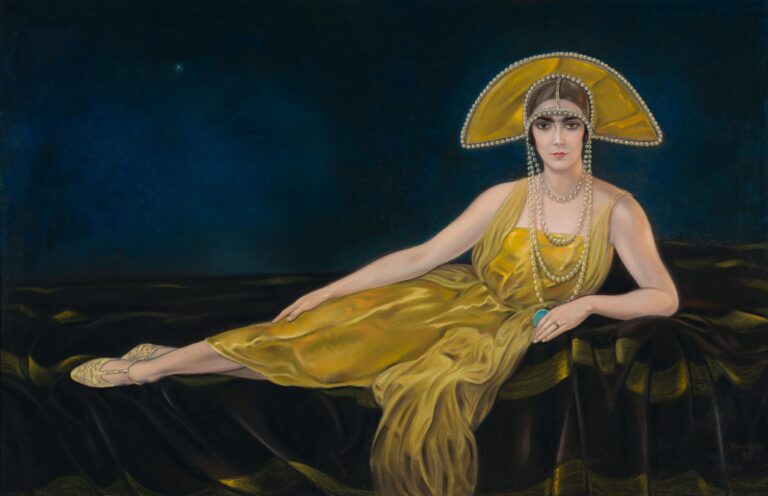Calpurnia was the daughter of Lucius Calpurnius Piso Caesoninus, a Roman consul, and was the last wife of Julius Caesar.
She married him around 59 b.C., after he had been married a first time to Cornelia, who had died in 69 b.C., and to Pompeia, a marriage that had ended in scandal in 63 b.C.
At the time of their union, Caesar’s many affairs were far from being a secret: his relationship with Servilia, mother of Brutus, was openly known and so were his liaisons with the Mauretanian queen Eunoë and the Egyptian queen Cleopatra.
But that never stopped a good man from marrying, right?
Regardless of this, Calpurnia is always described as a shy woman, faithful and devoted to her husband. Another one would have strangled him in his sleep, thus saving us the whole Ides of March shenanigans.
A romantic tale considers her the model for the Goddess Victory on the coins that Caesar had minted after his successful campaign in Spain, or the goddess Venus on the golden coins designed for Caesar’s fifth consulship.
As the story goes, Calpurnia was visited by one of the many omens that had foretold Caesar’s death, and the one who came closest to disbanding the conspiracy.
She had in fact dreamed that her husband had been stabbed in the Senate, and laid dying in her arms, and successfully begged him not to go the office the day afterwards. A request Caesar agreed upon, at least until his friend Decimus Junius Brutus (another Brutus, equally part of the conspiracy) came to his house and convinced him that an omen is not reason enough not to show up at work. Which we all know it is. And we all know how that went.
After Caesar’s assassination, Calpurnia is said to have given all of her husband’s writings to Mark Anthony, hoping they would aid him to avenge the fallen leader.
She is a character in Shakespeare’s Julius Caesar, where she dreams of her husband dying and of his statue being overflowed by blood.
Mademoiselle De Scudery has her writing an apology to Marcus Aemilius Lepidus, a Roman general and one of Caesar’s closest allies. George, her brother, also wrote about him in his La Mort de César, where he portrays Lepidus as a wise advisor and a loyal friend.
My favourite painting of her is Edward John Poynter‘s The Ides of March, painted some years before 1919 and currently at the Manchester Art Gallery.









No Comments